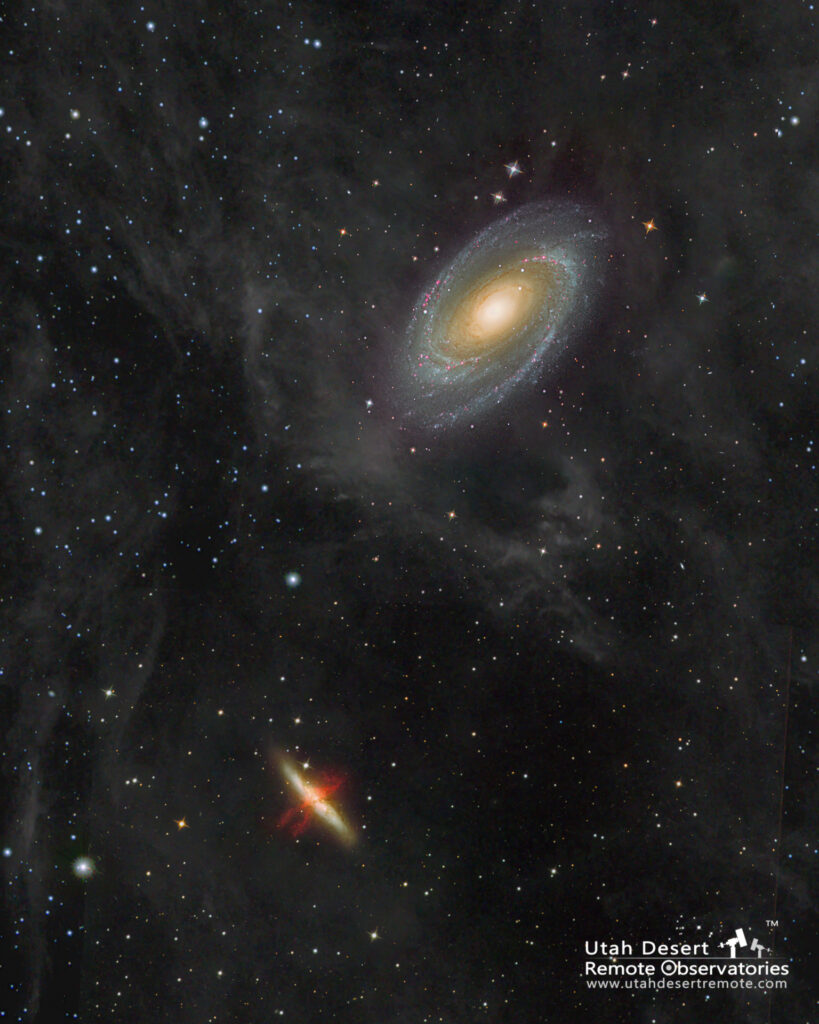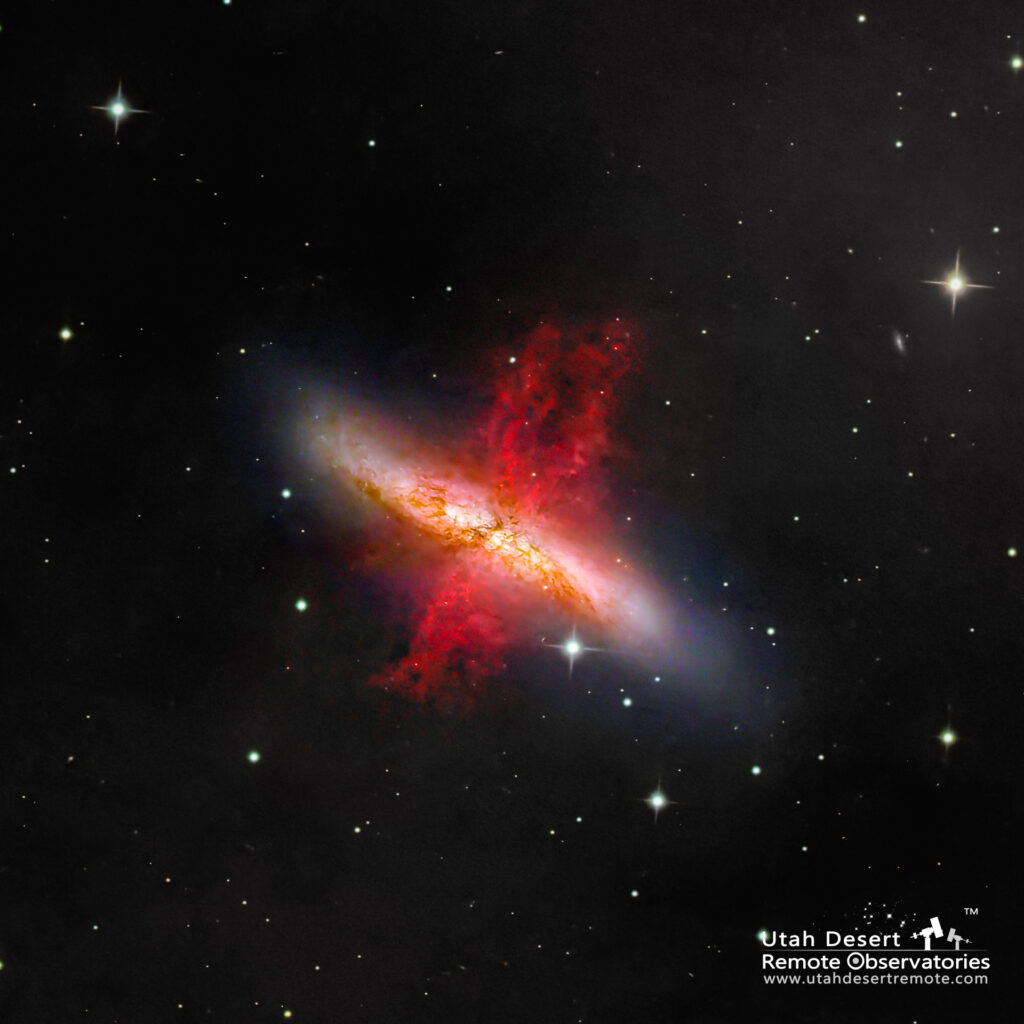
By Natalie Campbell
Galaxies are some of the most fascinating objects in the universe, and Messier 81 and 82 are no exception. These two galaxies have a gravitational lock which has affected the shape of one another. Having two bright galaxies within the same field of view is very rare.
Messier 82 is a galaxy that is located in the constellation Ursa Major. It is known as the Cigar Galaxy because of its unique shape. Messier 82 is about 12 million light years away from Earth, and it has a diameter of about 37,000 light years.
Johann Elert Bode was a German astronomer who lived in the 18th century. He discovered several celestial objects, like Darquier, Koehler, and Oriani. He also helped develop the Titius-Bode law. Bode’s law is an observation giving the planets’ approximate distance from the Sun. Which was used to predict the location of Uranus before it was even discovered. The discovery of planets around other stars has brought the law back into the discussion today.
Messier 81 is a spiral galaxy that is also located in Ursa Major, 12 million light-years from Earth. It has a diameter of 90,000 light-years. 81 has spiral arms, which wind all the way down into its nucleus, and are made up of young, bluish, hot stars formed in the past few million years. Messier 81 is also known and referred to as “Bode’s Galaxy’ this is because Messier 81 and 82 were discovered by astronomer Johann Elert Bode in 1774.
To capture detailed images of galaxies like Messier 81 and 82, you have to use a powerful telescope. It needs to be able to detect light from distant objects, often equipped with cameras that can capture long-exposure images. Long exposure really gathers more light to create detailed images. A filter to isolate specific wavelengths of light can help reveal important detail and structure of the galaxies. The people at Utah Desert Remote Observatories used a Takahashi FSQ106 telescope and ASI6200MM Pro to capture this image.
The Takahashi FSQ106 has a 178 mm back focus and a large 88 mm image circle. The Takahashi FSQ106 has an outstanding color correction and a G3 lens to ensure excellent image illumination. There’s also a redesign with a flat field advanced Petzval lens with extra-low glass for more color correction in the UV visible and IR wavelengths.
The ASI16200MM Pro monochrome camera has a sensor length and width are 36mm, and 24mm respectively, and a diagonal is 43.3mm. It has a Native 16-bit ADC which significantly improves the image’s sharpness and contrast, it makes it smoother and more natural-looking. With the ASI16200 you won’t have to worry about amp glow even when using high gain, long exposure imaging. It also has a two-stage TEC cooling, ultra-low dark current, and USB 3.0 & 256M DDR3 Memory.
When photographing a galaxy, use a color camera, It can collect the data and it will already be in color so post-processing is much more straightforward. Galaxies are the best on an OSC camera however, it’s more sensitive to light pollution and moonlight and tends to work best from dark sky locations like Utah Desert Remote Observatories.
“Why the M81 and M82 Galaxies Deserve Your Attention Every Spring.” AstroBackyard, https://astrobackyard.com/m81-and-m82-galaxies/. Accessed 10 March 2023.

